In the modern NHL, contract and salary cap management may be more critical than ever. With the cap kept flat due to the financial consequences of the COVID-19 pandemic, teams need to be thinking not only about the here and now, but about the long-term implications of any contracts they sign. General managers who can minimize bad contracts will likely be the GMs who find the most success.
However, every team in the league has a contract on the books that is questionable, no matter how good their GM is. This article will take a look at each team’s worst contract, with two things in mind: first, contracts evolve. In most of these cases, the team would likely not sign the same deal knowing what they know now. So we will attempt to establish why these contracts were signed when they were signed.
Second, and in the same line, these deals tend to become albatrosses because of injury, reduced performance, or aging. So all of these opinions are written with due respect to the players who, for the most part, were once-great NHL players who earned these contracts at the time.
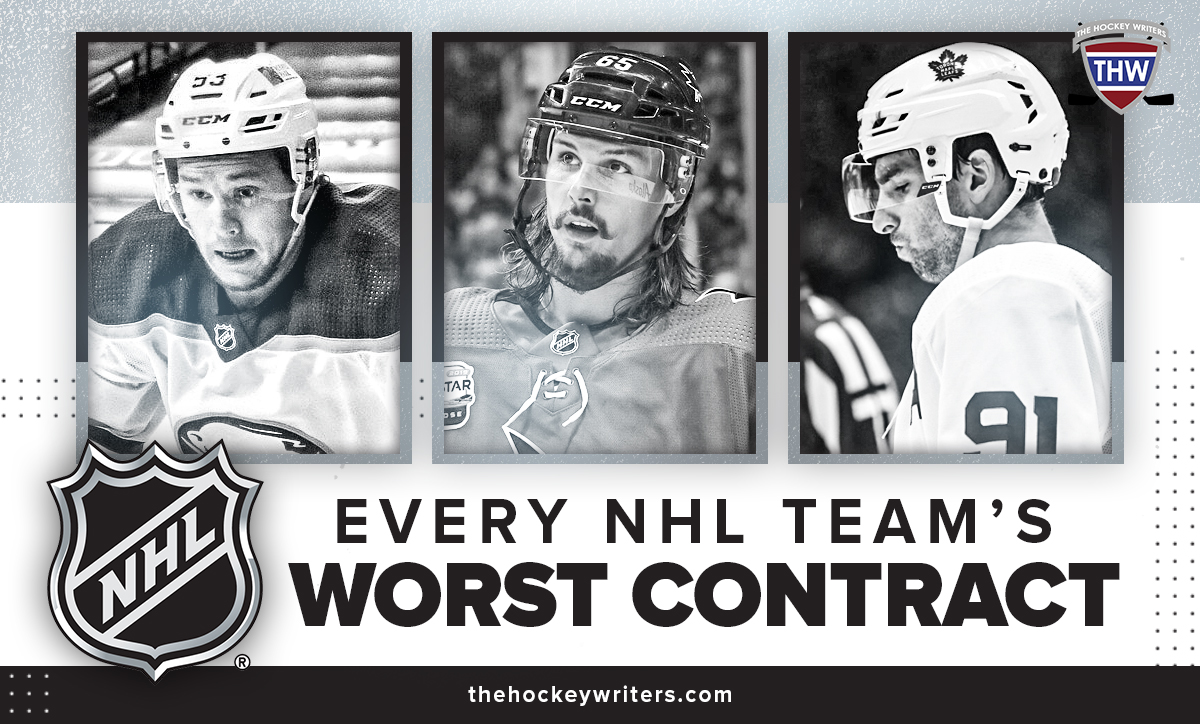
(The bolded text below each player name displays the term remaining on the contract, including the 2021-22 season, as well as the AAV and any no-trade clauses (NTC) or no-movement clauses (NMC) the deals contain.)
Anaheim Ducks: Jakob Silfverberg
(Three years, $5.25 million, with M-NTC)
The Anaheim Ducks are working on a rebuild that has seen them sell off major assets and elevate youngsters like budding superstar Trevor Zegras. Of the long contracts that remain for older players, three stand out. Cam Fowler has the longest deal, but he remains a high-level offensive defender, so it’s hard to consider it a bad deal. Adam Henrique has been considered for this spot in the past, but his performance this season has him near the top of the team in points.
Jakob Silfverberg, on the other hand, has three seasons remaining on his deal at $5.25 million and is 12th on the team in points at this writing. His metrics don’t suggest he’s underperforming, either. His deal isn’t an albatross, because rebuilding teams can afford a few bad years of a contract as they restructure for the future. But it’s also not a deal the Ducks are happy with. And they probably regret signing it when they did.
Arizona Coyotes: Clayton Keller
(Seven years, $7.15 million, with NTC starting in 2024, NMC beginning in 2026)
Relatively new Arizona Coyotes general manager Bill Armstrong has been making moves and clearing cap space in the desert, hoping to accelerate a rebuild for the recently homeless franchise. In that process, he managed to trade former captain Oliver Ekman-Larsson to the Vancouver Canucks. It was an impressive feat that rid him of one of the more burdensome contracts in the league (spoiler alert: we’ll return to Ekman-Larsson later). But a few questionable contracts still remain on his books: Nick Schmaltz, who has five years remaining at $5.85 million, and Clayton Keller, with seven years at $7.15 million left. We’ll focus on the longer, richer contract for this article.
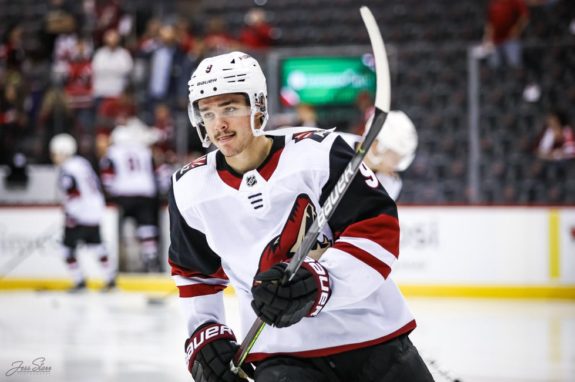
Keller is currently, for lack of a better candidate, the face of the Coyotes. Arizona paid top dollar to keep the young player after he scored 114 points in his first 167 career NHL games. At one point, the 65 points in 82 games from his rookie season seemed like an anomaly. But he has 60 points so far this season. If he can keep that output up, the Coyotes will not regret this contract. But as they don’t have many long-term contracts to begin with, for the time being, it remains the worst.
Boston Bruins: Charlie Coyle
(Five years, $5.25 million, with M-NTC, NMC)
Charlie Coyle’s contract is hardly one of the worst in the NHL, but on a team that has very few notable bad contracts, his still stands out a bit. The Massachusetts native hasn’t reached the 40-point threshold in any of the last four seasons but was a huge contributor in the team’s run to the Stanley Cup the season he came over from the Minnesota Wild. Unfortunately, it was that recency bias that influenced his contract early in the next season. Coyle is still a fine player and a solid contributor in Boston’s middle six. He will probably even break the 40-point threshold this season. But a $5.25 million annual commitment to a player who isn’t a clear difference-maker, and on a team with very strong contract management overall, it’s a deal that stands out.
Buffalo Sabres: Jeff Skinner
(Six years, $9 million, with NMC)
Some contracts feel like a stretch the moment they are signed. Some contracts look fatal because of the early returns after they are signed. Jeff Skinner’s contract with the Buffalo Sabres falls into both categories. Skinner scored 40 goals in his first season with Buffalo, and as a pending-Unrestricted Free Agent (UFA), then general manager Jason Botterill felt like he had to keep his star winger. But the eight-year, $72 million deal he signed always seemed like a steep price tag whose career high was 63 points (which he hit three times).
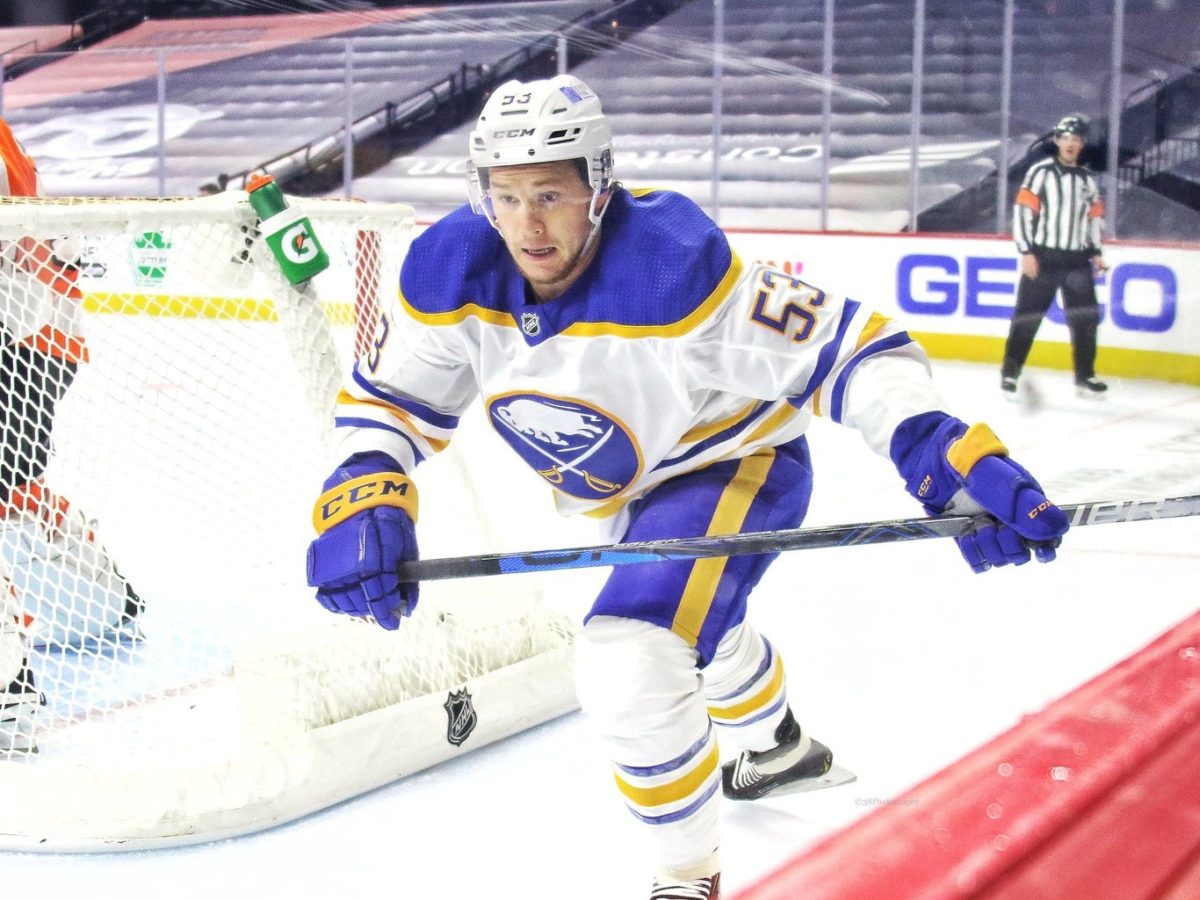
Unfortunately, Skinner’s performance hasn’t justified the deal he’d signed. He managed just 23 points the following season in 59 games, with a minus-22 rating. His results in 2020-21 were even worse, finishing with 14 points in 53 games. Even though he has 23 goals so far in the 2021-22 season, he’s still a minus-12 and a huge defensive liability. there’s no obvious solution for Skinner’s future in Buffalo, and, as the team seems mired in a perpetual rebuild, contracts like his will continue to be an albatross that holds them back.
Calgary Flames: Milan Lucic
(Two years, $5.25 million, with M-NTC, NMC)
Milan Lucic’s contract with the Calgary Flames is a bit unique, in that the Flames knew they were acquiring a cumbersome deal when they swapped James Neal for Lucic in 2019. Both veteran players had worn out their welcome with their clubs and carried bad contracts, and each franchise thought a change of scenery might be the best solution. Lucic played his 1,000th career game and celebrated it as a Flame. He provides the veteran leadership and grit he always has, but the offensive contributions are a thing of the past. Still, unless Lucic retires, Calgary will have to ride out the rest of this deal.
Carolina Hurricanes: Jake Gardiner
(Two years, $4.05 million, with M-NTC)
There are those who would argue that signing Anthony DeAngelo as a free agent made his the worst contract for the Carolina Hurricanes. But that really isn’t in keeping with the spirit of this article. The Hurricanes have no truly bad contracts. Jake Gardiner’s two years remaining at just over $4 million is currently (and possibly permanently) buried on Long-Term Injured Reserve (LTIR), so it might not encumber the Hurricanes. But it was still signed at an odd time, and his results when he could play were poor. Last season, he scored eight points and only managed 26 games, and hasn’t played since. Even if he remains on LTIR permanently, the strange decision to sign him in the first place keeps this deal on the list.
Chicago Blackhawks: Brett Connolly
(Two years, $2.375 million (buried cap penalty))
The Chicago Blackhawks signaled their intentions to enter a painful rebuild by trading Brandon Hagel to the Tampa Bay Lightning at the trade deadline. That reality makes signing Seth Jones to an eight-year, $76 million extension before playing a single game in the Windy City look even worse. But because he is having a decent metrical season and still remains a centerpiece of the team, he loses the distinction of “worse contract” by a hair to Brett Connolly.
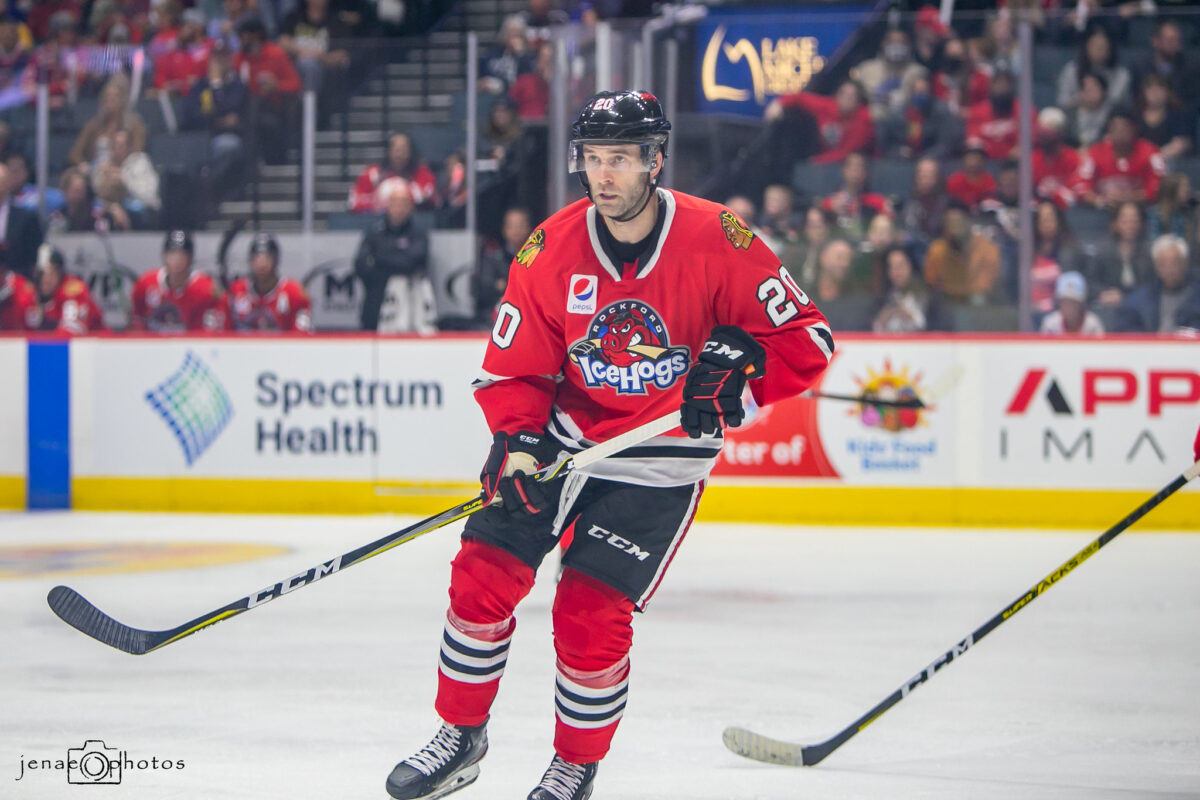
The Blackhawks traded for Connolly knowing he was on a bad deal. He was part of the return in a big trade deadline deal that sent Lucas Wallmark and Lucas Carlsson to the Florida Panthers and brought back Connolly, Riley Stillman, a 2021 seventh-round pick, and the rights to Henrik Borgstrom. Since then, the Blackhawks have sent Connolly to the American Hockey League (AHL) with the Rockford IceHogs. Even there, he burdens the NHL club with a $2.375 million cap penalty. If Borgstrom becomes a star for the Blackhawks, then it all will have been worth it. Even so, having a player on your roster who contributes nothing and costs you $2.375 million against the cap is hard to overlook.
Colorado Avalanche: Erik Johnson
(Two years, $6 million, M-NTC/NMC)
Erik Johnson is still a fine NHL defenseman when he’s healthy, although health has not been a given for him throughout his career. This is simply a case of the Colorado Avalanche not having many bad contracts, and their needing to protect every dollar they can against the cap. If general manager Joe Sakic cannot move Johnson’s $6 million, he certainly will not have room to keep the likes of André Burakovsky, Nazem Kadri, or even Valeri Nichushkin. That becomes an issue for teams that want to compete at the highest level, so Johnson’s contract stands out.
Columbus Blue Jackets: Elvis Merzlikins
(Five years, $5.4 million, starting 2022-23)
The Columbus Blue Jackets are a tough team to evaluate. They’ve made a habit of doing a lot with a little, and it’s tough to decide whether they’re truly “rebuilding” or not. In any case, on a roster full of seemingly mismatched parts, a few contracts stand out as troublesome. The team traded for Jakub Voracek knowing he had three years left on his deal at $8.25 million. Other than contributing almost no goals, he’s been solid this season. Gustav Nyquist is still expensive, but he’s also contributing. The only contract on the Blue Jackets that has the potential to go truly pear-shaped is the one goaltender Elvis Merzlikins will start next season.
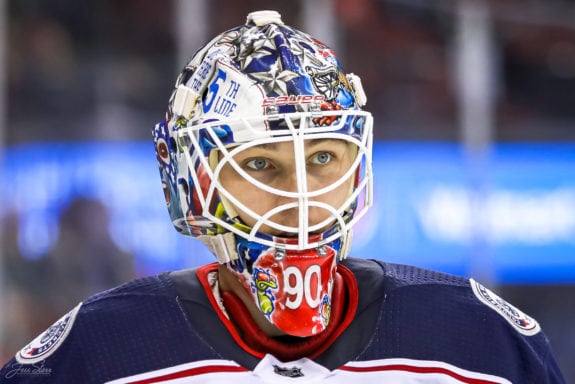
Let’s be clear: virtually everyone is a fan of Merzlikins. His tearful eulogy at the funeral of beloved teammate Matiss Kivlenieks showed the kind of human being he is. Unfortunately, his play on the ice has been on a distinct downtrend for three seasons. Currently, he has a .903 save percentage (SV%) and a 3.38 goals against average (GAA), along with minus-7.4 goals saved above average (GSAA). It’s not nearly good enough for a goaltender set to be the 12th-highest-paid in the league next season. Of course, it’s possible the shadow hanging over the season is affecting him, and he’ll recover quickly in the seasons ahead. Everyone will be rooting for him. But for now, it’s hard to ignore how rough this contract looks.
Dallas Stars: Jamie Benn
(Four years, $9.5 million, NMC)
There’s a long history of physical NHL forwards breaking down early in their 30s, and Dallas Stars captain Jamie Benn is no exception. He has 36 points in 62 games this season, but that isn’t nearly enough for a player tied for the 12th-highest AAV in the league this season. Plus, he’s become a complete liability in the defensive end. Benn is still the team’s captain, and he still plays an important role. But he and Tyler Seguin have never fully delivered on the promise they once had as the core of the Stars franchise. Now, there’s little hope that Benn will return to a top-level NHL forward, and there’s a lot of an expensive contract left for him to get through.
Detroit Red Wings: Pius Suter
(Two years, $3.25 million)
The Detroit Red Wings used to be a tangled web of terrible contracts, but through patience and the careful maneuvering of general manager Steve Yzerman, they are in the final years of most of their worst deals. Given that the team is rebuilding, and probably more concerned with hitting the cap floor than staying under the cap ceiling, none of the deals remaining on the books are especially hindering. But even so, Pius Suter’s two-year deal at $3.25 million isn’t great.
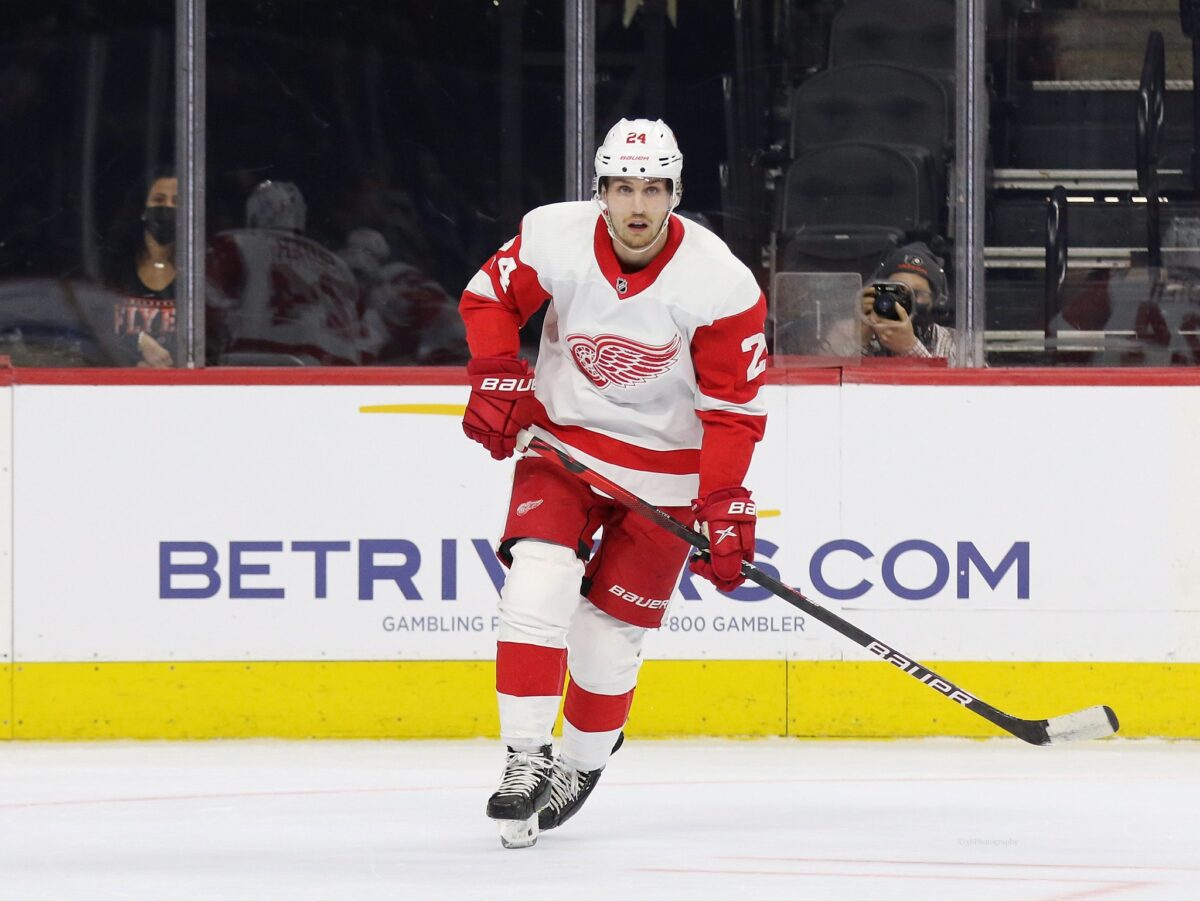
You can understand why the Red Wings took a shot at Suter. He is young, and it was surprising when the Blackhawks did not qualify him after a breakout season as a rookie in the NHL. But it was fairly expensive to grab him at $3.25 million per season. And he hasn’t delivered on his initial promise. His offensive production has slowed somewhat, and his metrics are not favorable. He’s still a fine player, and the Red Wings don’t have a truly bad contract. But this free agent deal hasn’t paid off.
Edmonton Oilers: Zack Kassian
(Three years, $3.2 million)
The Edmonton Oilers traded for Duncan Keith over the summer, bringing in an expensive deal that carries a $5.54 million cap hit for two more seasons. While Keith’s contract had been named as Chicago’s worst contract in previous editions of this article, the Oilers traded for it for a reason and knew the costs when they got involved. They want his veteran presence and took the cap hit willingly, so, for the time being, we will look elsewhere for Edmonton’s worst deal.
Zack Kassian’s four-year, $12.8 million contract looked dubious from the very start. Sure, he signed it during what would become his second-consecutive 15-goal campaign with the Oilers, a team desperate for secondary scoring beyond that provided by Connor McDavid and Leon Draisaitl. But Kassian was a journeyman grinder who had shown no ability to score consistently at that level. The bruising forward celebrated his new deal by incurring a seven-game suspension just weeks after signing it, and things haven’t gotten much better since. In 2020-21, Kassian was invisible, with just five points in 27 games. Three more seasons of this contract isn’t an exciting prospect, but GM Ken Holland has no one to blame but himself.
Florida Panthers: Sergei Bobrovsky
(Five years, $10 million, with NMC)
Sometimes, you take a big swing in free agency, and sometimes, it just doesn’t pay off. Sergei Bobrovsky was the top goaltender to hit UFA status in many years when the Florida Panthers signed him prior to the 2019-20 season, and they paid top dollar to pair him with then-new head coach Joel Quenneville. But, even while the Panthers improved to become a top team in the league, the two-time Vezina Trophy center was mediocre at best in his first two seasons.
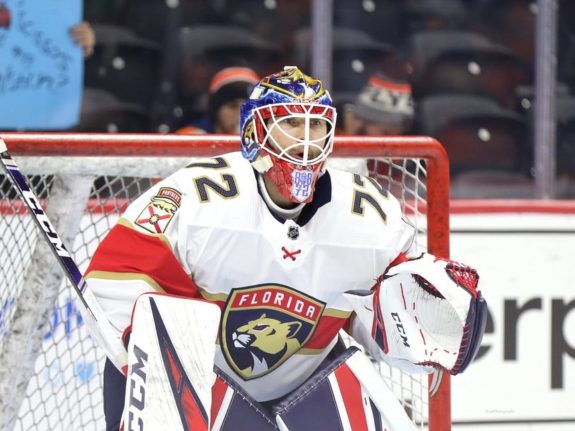
Bobrokvsy’s numbers weren’t horrendous in the 2020-21 season, as he finished with a .906 save percentage (SV%) and a 2.91 goals-against average (GAA), with minus-1.9 goals saved above average (GSAA). Unfortunately, Chris Driedger was a revelation behind him and carried a 2.09 GAA and .927 SV%. Bobrovsky’s NMC forced Florida to expose Driedger to the expansion draft, whereupon the Seattle Kraken gladly took him. Now, it appears top prospect Spencer Knight is ready for the NHL. But Bobrovksy’s hefty contract likely means he will continue to earn playing time above the youngster. Knight is still the future, but the road to get there could be a rocky one with Bobrovsky between the pipes. He’s been better this year, but it’s still far too much to pay for a mid-level goaltender.
Los Angeles Kings: Drew Doughty
(Six years, $11 million, with NMC)
Some might view this as a controversial choice, but they shouldn’t. No one is questioning Drew Doughty’s career contributions to the Los Angeles Kings, nor his Hall of Fame resume in the future. But at this point in his career, he is not producing anywhere near what he should for someone who carries a cap hit tied for fifth-highest in the league (and the second-highest amongst defensemen. Spoiler alert: the one defenseman who surpasses him will also appear in this article).
Doughty still logs over 25 minutes per game, which is among the highest numbers in the league. He still produces points. But his point share, which measures a player’s contribution to his team’s place in the standings, is down in the 5-6 range from career highs in the double digits for three consecutive seasons. Those numbers are fine, they just aren’t elite. And an $11 million cap hit is far too high for anyone who is no longer elite. As the Kings approach the end of their rebuild, Doughty’s number could be a roadblock to their making the most of the years ahead.
Minnesota Wild: Mats Zuccarello
(Three years, $6 million, with NMC)
Let there be no mistake: in many ways, the worst contracts on the Minnesota Wild are still the twin contracts given to Zach Parise and Ryan Suter in July 2012. Though GM Bill Guerin finally took the plunge and bought both players out, those contracts will haunt the team for years to come, especially between 2022-2025, when they carry combined dead cap hits of roughly $12.6 million (2022-23) and $14.6 million (2023-24, 2024-25) that will effectively cripple the team in free agency, the trade market, and contract extension talks.
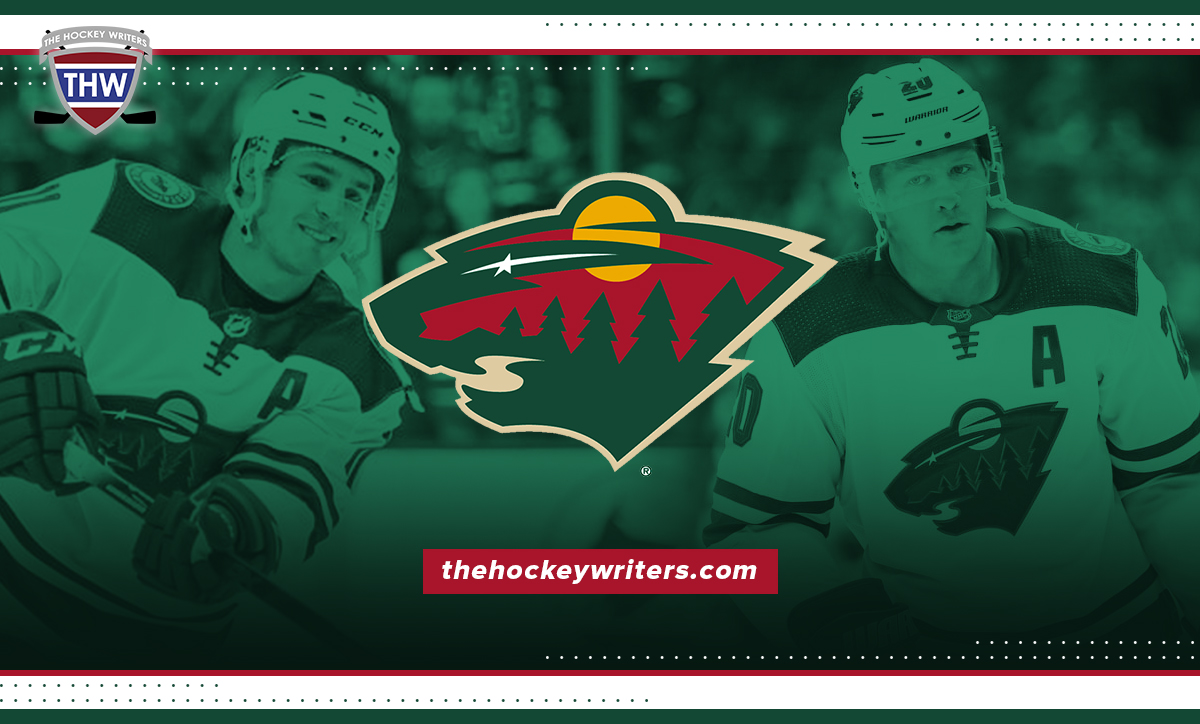
But, a bought-out contract isn’t officially in the spirit of this article, so for the worst active contract, we turn to Mats Zuccarello, who signed a five-year, $30 million contract in 2019. It’s not that Zuccarello has been particularly bad for the Wild — he hasn’t. His inclusion here has more to do with his age, 34, and the $6 million free agency premium the team is paying him. Zuccarello may be the greatest-ever Norwegian NHL player by a country mile, but he’s aging and expensive, and with those two buyouts on the books, the Wild cannot afford even an ounce of fat on their books. Guerin would likely be thrilled to trade Zuccarello to a team with excess cap space, given the chance, and may look to do that after the 2021-22 season. Of course, the unnecessary NMC his predecessor gave Zuccarello could prevent even that.
Montreal Canadiens: Joel Armia
(Four years, $3.4 million)
Unfortunately for them, the Montreal Canadiens have a number of contenders for this list. Shea Weber’s contract is huge, but it will be buried on LTIR for the rest of its term, and likely traded. Carey Price has a huge deal, but with respect to the circumstances of his absence, we didn’t consider him an option. Moreover, this season has proven just how valuable Price really is. Even with them out of the running, there are a few remaining options, but Joel Armia takes the ignoble distinction by a hair. Armia isn’t a bad player, he’s just paid too much for too long. His production has fallen off this season, and metrics don’t smile on him, either. Of the bad contracts on the Canadiens, Armia is making the most money with the least justification. So his is the worst contract.
Nashville Predators: Colton Sissons
(Five years, $2.857 million)
What a difference a year makes. Coming into this season, Matt Duchene was a slam-dunk selection for the Nashville Predators’ worst contract. But this season, he looks like the superstar the Predators thought they had when they brought her in. Ryan Johanson hasn’t been quite as good, but he’s producing like a good center and while he might be marginally overpaid, he isn’t disappointing like he used to. Many Predators seem to be thriving under head coach John Hynes. No one sticks out like a sore thumb on the roster page. But we’ll highlight Colton Sissons as the worst contract here.
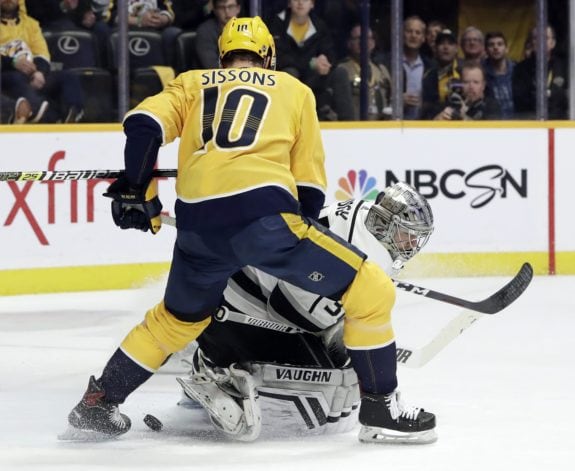
Sissons is a fine player. In fact, he’s having a career year in points, he’s currently seventh on the team. His contract is more head-scratching than it is truly “bad.” When news broke that the Predators signed Sissons to a seven-year, $20 million contract, it seemed like it must be a misprint. Bottom-six forwards simply don’t get contracts that long in the NHL. And while the player remains as solid as he ever was, it is still a long and awkward contract to deal with. With other, more expensive players once again performing at an elite level, Sissons is the most logical choice for worst, or certainly “oddest,” contract on the Predators.
New Jersey Devils: Tomas Tatar
(Two years, $4.5 million)
The New Jersey Devils don’t have a lot of really bad contracts, but Tomas Tatar’s looks like a mistake. The Devils signed him in the offseason, giving him two years for $9 million. Those contracts can never kill a team, but he is the team’s fourth highest-paid player, and he is 10th in points. Clearly, the Devils believed they were closer to contention entering the season than they actually were, and Tatar’s contract is some proof of that. At leaset it is an asset they can likely trade at the 2022-23 trade deadline, should they still not be in the playoff picture by then.
New York Islanders: Matt Martin
(Three years, $1.5 million)
It’s been a disastrous year for the New York Islanders, and it is difficult to analyze their roster in a season that seems to be an anomalous result from their norm. Even so, the four-year, $6 million contract Matt Martin is on will never make sense. Martin is an enforcer, and this is the second unnecessarily long contract general manager LouLamoriello has given him, having signed him to a four-year deal with the Toronto Maple Leafs as well. It’s not that Martin doesn’t bring something to the room. It’s that his role isn’t one a team needs to commit to for four years at a time. The AAV is low, so the damage is minimal. But the Islanders’ accounts are pretty clean right now, so Martin will take the heat for now.
New York Rangers: Barclay Goodrow
(Six years, $3.64 million, with M-NTC)
The New York Rangers’ decision to sign Barclay Goodrow to a six-year, $21.85 million contract is short-sighted asset management at its finest. The Rangers should not have reasonably expected to be top-level contenders this season, and even with the Hart Trophy-level output of goaltender Igor Shesterkin, they are still huge underdogs in the loaded Eastern Conference. Goodrow earned a reputation as a playoff performer with the Tampa Bay Lightning, on their powerhouse third line. He and linemates Yanni Gourde and Blake Coleman all got huge deals this summer. But Goodrow’s makes the least sense because of his team’s circumstances.
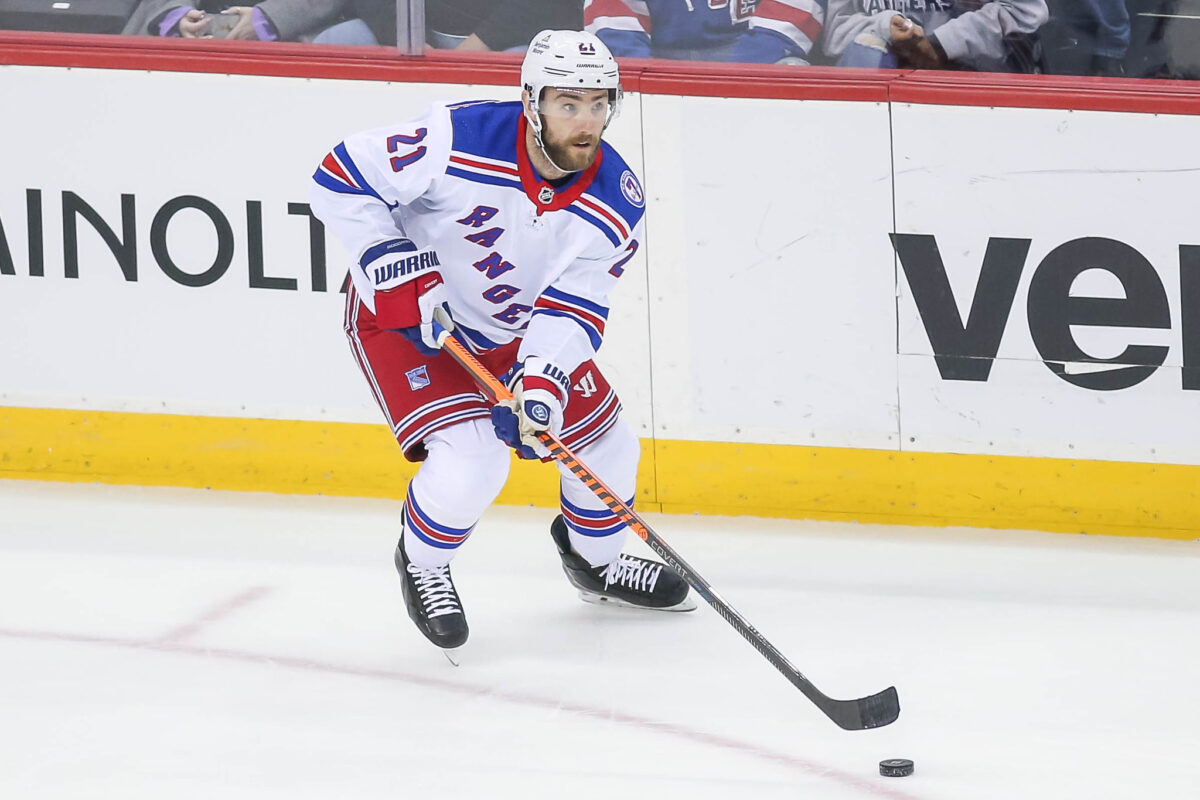
Make no mistake: Goodrow is a great player to have in your lineup. His contract is just far too long. The Rangers have some salary cap flexibility at the moment, but they’ll soon have to extend players like Kaapo Kakko and Alexis Lafreniere, plus Adam Fox’s extension will kick in next season. Before long, the Rangers will still be on the rise, but cash-strapped. And Goodrow will be aging and expensive. If they win a Stanley Cup in the next season or two, no one will care. But if they’re in year four or five of a pursuit and Goodrow is blocking them from making important moves, then the Rangers could live to truly regret this deal.
Ottawa Senators: Matt Murray
(Three years, $6.25 million, with M-NTC)
The Ottawa Senators traded for Matt Murray and signed him to a four-year, $25 million contract extension betting that he would return to form as the two-time Stanley Cup winner that he once was. But he has not delivered on that promise at all since reaching Canada’s capital city. He was even sent to the AHL for a stint this season. The Senators are a young, rebuilding team who need to hit the salary cap floor, so Murray’s contract really doesn’t damage them terribly. But it is the worst of a few bad deals.
Philadelphia Flyers: Kevin Hayes
(Five years, $7.142 million, with NMC)
As tempting as it would be to finger Rasmus Ristolainen’s new extension as the worst contract on the Philadelphia Flyers’ books, there is one that seems even worse at the moment. The Flyers had one of the busier offseasons of any team in the NHL, and in the process rid themselves of the troublesome contracts of Shayne Gostisbehere and Jakub Voráček. They still have several questionable deals on the books, though, and with due respect to a beloved player, none is more suspect than the one given to forward Kevin Hayes.
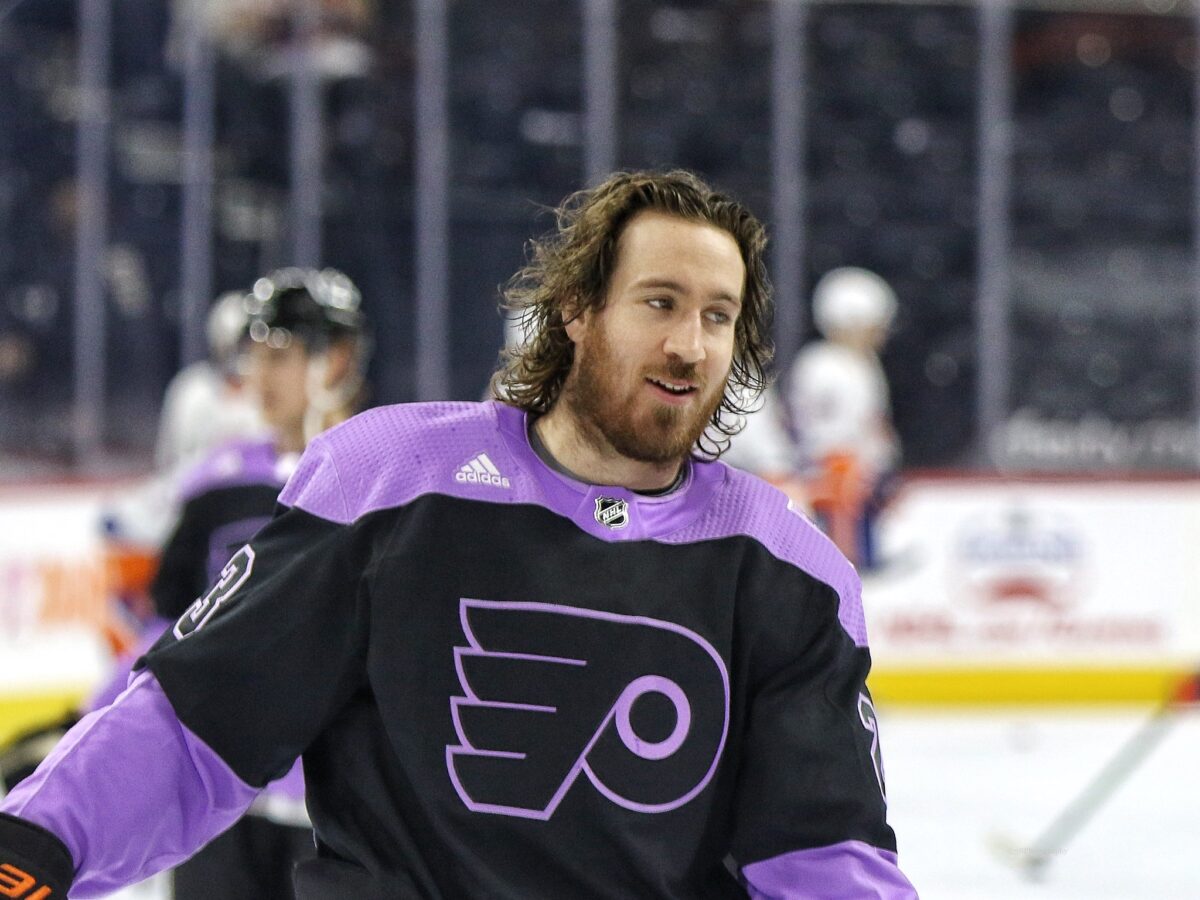
The Flyers signed Hayes to a seven-year, $50 million contract as a pending UFA by first trading for his rights. The price tag of over $7 million per season immediately felt like an absurd stretch for a player who had only just passed the 50 point mark for the first time in his career, especially since the club tacked on a NMC. Hayes actually has fit in well in Philadelphia and is a beloved, heart-and-soul type player admired around the league. But that cap hit is still too much, especially in a flat-cap era. Plus, as a 6-foot-5, 216 pound, physical forward, his game isn’t likely to age gracefully. This season, he’s 10th on the team in points. The no-movement clause in his deal makes the contract even more challenging. Some Flyers fans may disagree, but over time, Hayes’ contract is likely to look worse and worse.
Pittsburgh Penguins: Mike Matheson
(Five years, $4.875 million, with M-NTC)
In trading Patric Hornqvist for Mike Matheson, the Pittsburgh Penguins offloaded a troublesome contract, but they brought one back as well. Matheson is a fine young defenseman, but he doesn’t offer any contribution substantial enough to justify a $4.875 million annual contract. He is middle of the pack on the team in on-ice xGF%, and in the bottom third in on-ice CF%. And with 107 points in 343 career games, he isn’t a point producer, either. Matheson isn’t a terrible player by any means, but his contract is too much and too long and will hinder an already cap-strapped team.
San Jose Sharks: Erik Karlsson
(Six years, $11.5 million, with NMC)
Erik Karlsson was once the best offensive defenseman in the NHL, and, in his prime, was among the best point-generating blueliners in the history of the game. But those days are gone, and the many remaining years on his contract are not.
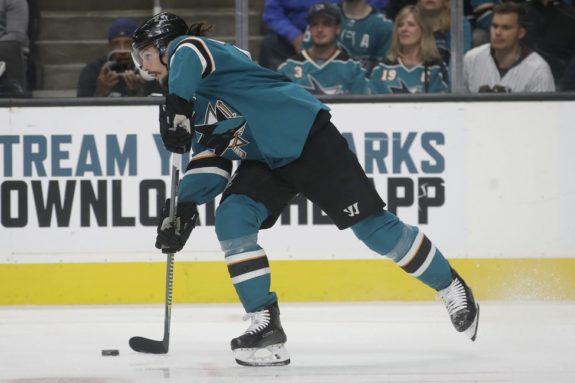
Athletes are inevitably paid for past production rather than future production, but Karlsson may be the worst case in the league. His skating seems lost. He’s middle of the team in on-ice CF% and xGF%. Karlsson would still be a valuable player on the right contract. But with the fourth-highest cap hit in the league, his is a devasting deal that has helped force the Sharks into a rebuilding phase.
Seattle Kraken: Philipp Grubauer
(Six years, $5.9 million, with NTC)
When the Seattle Kraken signed reigning Vezina Trophy finalist Philipp Grbuaer to a six-year, $35.4 million contract, it seemed like the coup of the offseason. Unfortunately, Grubauer has gone from being one of the best goaltenders in the league to being one of the worst. The Kraken has a fairly strong defense. But thanks largely to Grubauer, they have the worst SV% and high danger SV% (HDSV%) in the league. The Kraken are a young team without a lot of long-term contracts. But until he turns his results around, Grubauer’s deal will be the worst one in the Emerald City.
St. Louis Blues: Colton Parayko
(Eight Years, $8.5 million, with NTC, Starting 2022-23)
This might be another controversial selection. When the St. Louis Blues signed Colton Parayko to an eight-year, $52-million contract extension after an injury-plagued season, they were gambling that they were buying a discount on maybe the most expensive position in the league. General manager Doug Armstrong saw the wild deals given to Zach Werenski and Seth Jones and must have thought $6.5 million per season was a bargain for someone they thought would be the centerpiece of their defense.
Related: Blues’ Parayko Extension is a Big Gamble
Unfortunately, Parayko has not been the centerpiece. Or, if he is, he isn’t producing enough. The Blues’ identity has transformed. Once built on stout defense, they are now a high-octane offense whose blueline struggles to keep up at times. And Parayko is no longer the shutdown defenseman he once was. He also does not produce offense like the best top blueliners in the league, which makes him insufficient as a true #1 defender. Parayko isn’t a bad player, necessarily. But he isn’t what the Blues need from him. And to know that before his eight-year extension even kicks in is worrying to say the least.
Tampa Bay Lightning: Ryan McDonagh
(Five Years, $6.75 million, with NTC)
Can the perfect NHL franchise and two-time Stanley Cup champion really have a bad contract? Barely. The Lightning have been notoriously precise with the salary cap, and their latest deal, bringing in Seabrook’s contract to manipulate the LTIR and trading Johnson in the process, left them without one obvious choice for this ignoble distinction. The two remaining options who are remotely deleterious to their overall contract situation are captain Steven Stamkos (merely because of injury) and defenseman Ryan McDonagh, due to term and role. We’ll choose McDonagh by a hair.
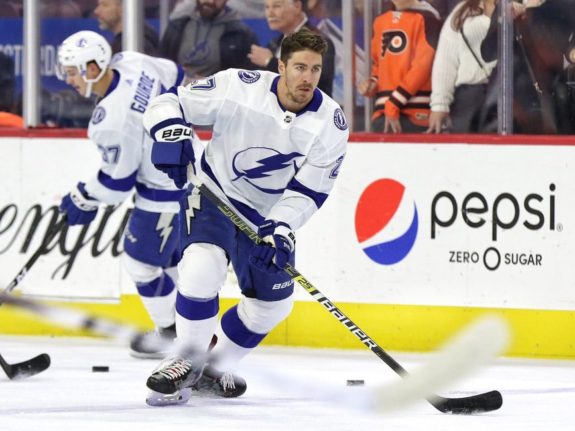
McDonagh is a perfectly fine top-four defenseman. But on a team where every dollar counts and that produces future talent like the Hoover Dam produces electricity, a five-year deal for an aging defenseman could be more cumbersome over time. He isn’t much of an offensive contributor, either. In spite of that, they’ve won two Stanley Cups, and no one in Tampa has any hard feelings toward McDonagh. But somebody has to hold down this spot, and he’s the most obvious answer right now.
Toronto Maple Leafs: John Tavares
(Four years, $11 million, with NMC)
There’s no question that John Tavares remains one of the premier centers in the NHL, but he didn’t rank among the top 10 in a recent front office ranking organized by ESPN. He carries the sixth-highest cap hit in the NHL (though his teammates Auston Matthews and Mitch Marner rank third and seventh). The narrative for signing the hometown kid who was the most coveted free agent in recent memory was obvious. And Tavares currently has 256 points in 263 games for the Toronto Maple Leafs. So he hasn’t really done anything to earn derision.
The problem with Tavares’ contract is his circumstances. The deal undoubtedly drove up the value and the temperature in negotiations with Matthews, Marner, and even William Nylander. And now Tavares is approaching the end of his prime, likely to decrease in output substantially over the next several seasons. When the Maple Leafs need to re-sign Matthews after the 2023-24 season, they’ll need to navigate the final season on Tavares’ contract to do it. One could easily pick on Alexander Kerfoot’s deal as the worst in Toronto, given the high cap hit for a bottom-six forward. But Tavares’ deal has haunted the Maple Leafs already, and those unfortunate circumstances are likely to continue.
Vancouver Canucks: Oliver Ekman-Larsson
(Six years, $7.26 million (Arizona retains $990,00 per season) with NMC)
By trading Jay Beagle, Loui Eriksson, and Antoine Roussel to the Coyotes, Vancouver Canucks GM Jim Benning rid himself of three small headaches. But he arguably packaged them to trade for one big headache, the long and expensive contract of Oliver Ekman-Larsson.
Ekman-Larsson may have something valuable to offer a team at the right price tag. But there’s no question that over $7 million a season for seven more seasons is not the right price. His offseason production has dropped off, from a career-high of 23 goals in 2014-15 down to under 10 in the last two seasons combined. And while defense was never the best part of his game, it seems to have gotten worse in recent seasons. Given the difficulties they had signing Elias Pettersson and Quinn Hughes to contract extensions, Ekman-Larsson’s deal was an immediate obstacle for his franchise.
Vegas Golden Knights: Alex Pietrangelo
(Six years, $8.8 million, with NMC)
Is it too early to condemn Alex Pietrangelo’s one-year old new contract with the Vegas Golden Knights? Maybe. But on a team that was already among the best in the NHL, signing the top free-agent defenseman always felt like something of an extravagance. The Vegas front office has earned a reputation for impatience and tinkering, and Pietrangelo is the prime example: bringing in another huge contract despite consistent playoff success. Plus, they traded Nate Schmidt for peanuts and upset their locker room to make the deal fit.
Pietrangelo is a top-line right-handed defenseman, and those should cost a premium. But he struggled to stay healthy in his first season in Vegas and finished with 23 points in 41 games. His defensive metrics this season are brutal as well. He was a standout player in the Golden Knights’ postseason run, but that didn’t get them any farther than they had been in previous runs. It’s not that he isn’t still a fantastic player. It’s that the Golden Knights are committing to him through his age decline on a backloaded deal as a luxury on a team that was already very good. Vegas could live to regret this signing in a flat-cap era.
Washington Capitals: T.J. Oshie
(Four years, $5.75 million, with M-NTC)
T.J. Oshie is still a skilled top-six player at this point in his career. He was a major factor in the Washington Capitals’ Stanley Cup run, scoring 21 points in 24 games. He’s also a fan favorite and a U.S. Hockey legend, with his incredible shootout performance in the Sochi Olympics. There’s no questioning why the Capitals wanted to keep Oshie around for the long haul.
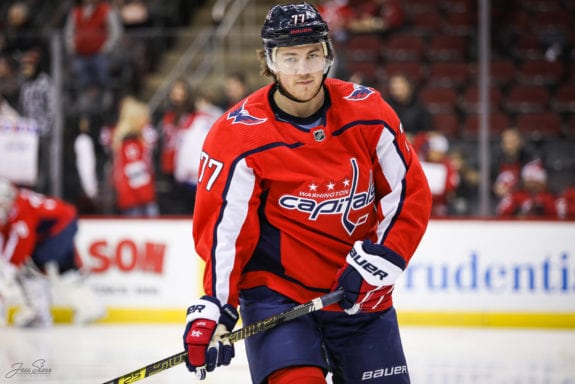
But in this case, the haul was a few years too long. He will be 37 by the end of his current deal, and there’s no reason to believe his level of play will hold up that long. At almost $6 million per year, that’s a big gamble for Washington. The Capitals are still a dangerous team, but as they age, Oshie’s contract is likely to look worse and worse.
Winnipeg Jets: Adam Lowry
(Five years, $3.25 million, with M-NTC)
Before we criticize too quickly, let’s be clear that the Winnipeg Jets have one of the cleanest contract sheets in the league, and choosing a “worst” contract wasn’t easy (especially after they traded Bryan Little’s deal to the Arizona Coyotes). But in signing Adam Lowry to a five-year, $16.25 million contract extension last spring, GM Kevin Cheveldayoff made the classic mistake of signing an average-but-popular player to too friendly a contract. Lowry’s never passed 30 points in a season, and his metrics aren’t especially friendly, either. He’s a fine player. But not the kind of player you need to commit to for five seasons. Everyone knows the struggles Winnipeg faces to acquire free agents or keep players with expiring contracts, so this might be an overpay to prevent another departure. It’s not a disastrous deal, it’s just a little too rich for a bottom-six player.
Spending Never Stops
Many speculated whether the flat-cap era would lead to a new and more cautious approach to contracts, but a quick look at the dealings this offseason makes it clear that won’t be the case. GMs signed several contracts that will almost certainly appear on this list in future seasons, and money flew around on free agency day with reckless abandon. Some things never change, and bad contracts in the NHL fit right in alongside death and taxes.
